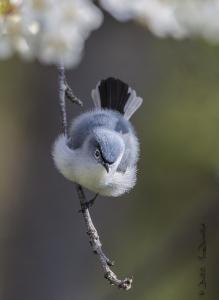As for you budding bird-watchers, it will be our great pleasure to help you take your first bird-watching footsteps.
Description
Plenty of our cruises offer the chance to take in a wide variety of birds. Already an accomplished ornithologist? Then we’ll take you where you want to go – off to see feathered friends you can’t reach any other way, as well as the scores of migratory species you may be more familiar with.
Our trained staff consists often of ornithologists or keen birders and they are there to help you and point out the different species. On-board lectures will help you to gain knowledge of the birdlife. We’ve collected the following bird watching tips to help get you started.
Identification of birds
So now that you can see the birds you’re probably going to want to know what they are. The Sibley Guide is generally considered the king of guidebooks. The National Geographic’s Field Guides are also worth investigating. Know the habitats. If you know that a certain kind of bird nests, for example, within rocky cliff crevices then you’ll have a much easier time making a spotting. Also, watch the bird for a while. Don’t be in a rush to flip through your guidebook’s pages in order to nail that identification. After all, the goal of bird watching is to enjoy the bird itself. Besides, the more you watch the bird, the more points you’ll pick up that you can use for picking it out in your guide
Here are the general steps you take for identification of Birds:
Song – Songs and calls are a great way to identify a particular species of bird. Watch the bills in particular to make sure the song you’re hearing is coming from the bird you’re actually watching.
Size and Shape – How big is the bird? Set some general item – like a football – as your mental comparison tool, and then compare all birds to that. Or become really familiar with one kind of bird and then measure all other birds against it. Also, what is the bird’s general configuration? Does it generally resemble a gull, a duck, or something smaller like a robin?
Faces – Now it’s time to zoom in and get more specific. Are there any distinctive patches of colour around the eyes? Does it have any sort of display feathering off the top of its head? Does it have a coloured cap or a band of colour around the nape of the neck? How about the bill – what colour is it? Is it blunt or long? Straight or curved?
Wings and Tails – Are the wings short and stubby (like penguins) or are they built to soar with long wide wings that don’t flap very often? Do the wings have the same colour as the back and underbelly? Do they have their own patches of colour? How about the tail – short or long? Are there streamers (extra-long middle tail feathers)?
Feet – Webbed? Talons? How far forward or back on the body are they located? Short or long? Are there backward-facing toes?
Flight and Movement – In flight, do the wings beat rapidly or does it soar for long periods of time? Does it have an easy time taking off from land or does it prefer to get in the water first so it has a long “runway” for take-off? If it’s a penguin does it hop or waddle? Does it like to slide along the ice on its belly?
Eating Habits – What does the bird eat? How does it hunt or feed? Does it capture its own food or does it harass other birds to steal theirs?
Area – Many of the birds you’ll see on our cruises are pelagic, meaning that they live most of their lives at sea. When you spot them on land chances are that they are in their mating season. So what kind of area are they nesting in? Do they build actual nests (if they do, what materials are they using?) or do they just use scrapes in the ground? Are both parents present or is one off hunting?
To know more about the Bird Watching Tour:
https://oceanwide-expeditions.com/to-do/experiences/bird-watching

